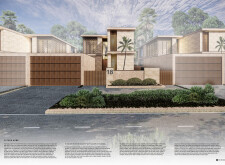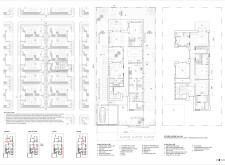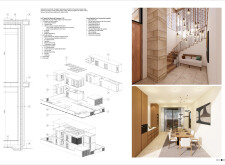5 key facts about this project
## Overview
The Future Home is a residential development located in Dubai, UAE, designed to meet the needs of Emirati citizens while addressing contemporary living requirements. The project emphasizes alignment with local cultural values and sustainable practices within the rapidly evolving urban landscape of the city.
## Design Philosophy and User Interaction
The concept centers around sustainability, modularity, and adaptability, creating a coherent relationship between the built environment and the natural context. Key strategies include modular construction techniques that promote user personalization and future expansions, enhancing the flexibility of living arrangements. The spatial layout is engineered to foster community interaction, featuring communal green spaces that serve as social hubs for residents, encouraging engagement and collaboration.
## Material Selection and Performance
The material palette integrates both functionality and aesthetic considerations. Limestone is utilized for its durability and elegance, well-suited for Dubai’s climate. The structural framework employs cold-rolled steel for strength while allowing for adaptability. Large glass panels, framed in aluminum, maximize natural light while ensuring thermal efficiency. Additional elements such as aluminum composite wood louvers provide shading and enhance the building's performance in hot conditions. The use of Exterior Insulation Finishing Systems (EIFS) ensures effective thermal regulation, while Glass Fiber Reinforced Concrete (GFRC) is incorporated for decorative features, combining resilience with aesthetic appeal.
Innovative lighting solutions, including skylights and strategically placed windows, are designed to reduce reliance on artificial lighting and promote energy efficiency. The architectural form reflects modernist principles infused with traditional elements, resulting in an efficient spatial organization that balances public and private areas for improved comfort and utility.





















































